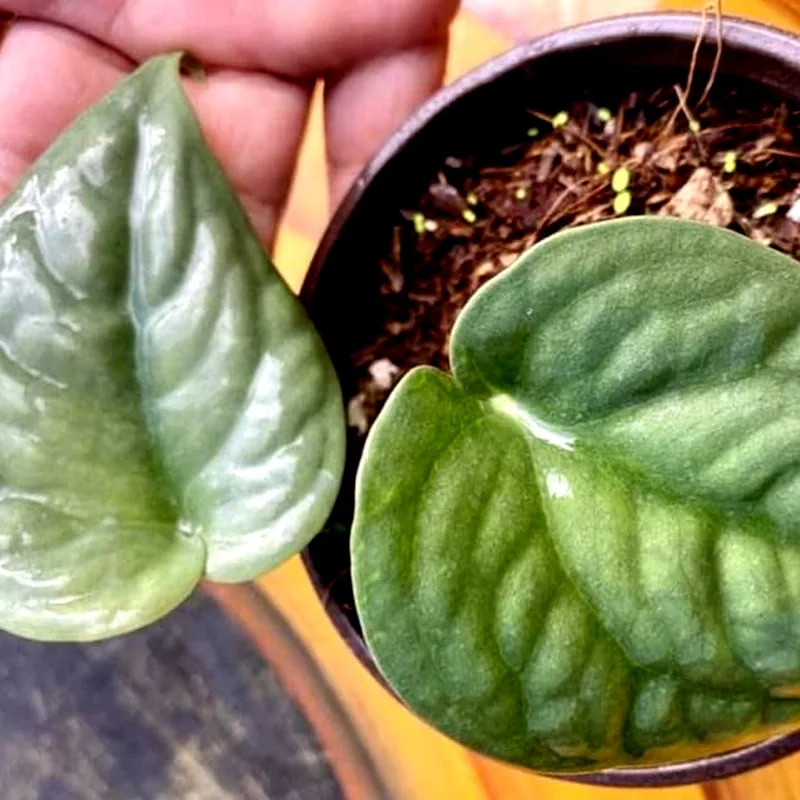My Fascination with Nephthytis
I’m Ferb Vu, and I’ve always been drawn to the unique beauty of houseplants. There’s something about their resilience and quiet strength that resonates with me. Among my favorites is the often-overlooked genus Nephthytis from the Araceae family. These tropical wonders, with their intriguing foliage and easy-going nature, have captured my attention and earned a special place in my heart, and hopefully, in my home soon.
Perhaps you know Nephthytis by one of its more common names: Arrowhead Plant or African Evergreen. Native to tropical western and west-central Africa, these plants bring a touch of the exotic to any indoor space. What fascinates me most about them is the diversity within the genus. Each species boasts its own distinct personality, expressed through variations in leaf shape, size, and color.
A Closer Look at Nephthytis Species
While the genus isn’t as expansive as some, each Nephthytis species offers something unique:
- Nephthytis afzelii is a tropical plant native to West Africa, often prized for its lush, arrow-shaped leaves that bring a vibrant touch to shaded gardens and indoor spaces. The leaves are typically green with prominent white veins, adding a striking pattern that appeals to many collectors. Adaptable to low-light conditions, N. afzelii is relatively easy to care for, as long as it’s kept in moist, well-draining soil. This species is also known for its climbing habit, making it an excellent choice for plant enthusiasts interested in training it onto supports for a vertical display.
- Nephthytis hallaei stands out with its unique, elongated foliage, often marked by lighter, almost silvery veins. Originally found in rainforest regions, N. hallaei requires humid conditions to thrive, making it a great candidate for indoor spaces or terrariums with controlled humidity. Unlike some other Nephthytis species, it can have a more compact growth habit, which adds to its appeal as a houseplant. Its preference for partial shade and high humidity makes it a charming, exotic choice for tropical plant lovers.
- Nephthytis mayombensis is native to the lush Mayombe forest region, and its growth patterns reflect its origins. This species has large, vibrant green leaves with a heart-like or lobed shape, offering a bold aesthetic for any indoor plant collection. It enjoys high humidity and indirect light, making it suitable for terrarium setups or as a part of shaded outdoor landscapes in tropical areas. Known for its robust, leafy appearance, N. mayombensis brings a natural, jungle-like appeal to cultivated spaces.
- Nephthytis poissonii is distinguished by its relatively larger, arrow-shaped leaves with a more leathery texture, which helps it retain moisture in its native humid environments. Its foliage often showcases rich green hues, sometimes with lighter vein patterns that add visual interest. While it prefers indirect light, it can tolerate a range of lighting conditions, which makes it adaptable as a houseplant. N. poissonii also has a climbing tendency, allowing it to add height and dimension when provided with support structures.
- Nephthytis swainei is a rarer species, appreciated for its lush, dense foliage and striking, arrowhead-shaped leaves. Often found in shaded forest undergrowth, it thrives in environments with low light and high humidity. The leaves tend to have a softer texture and are usually deep green, contributing to a calming, forest-like feel in any indoor space. This species is a slow grower but rewards patience with its rich, leafy texture, making it a beautiful choice for shaded spots in home or garden setups focused on a tropical aesthetic.
Why I Admire Nephthytis
Beyond their aesthetic appeal, I admire Nephthytis for their resilience. They are relatively low-maintenance plants that can tolerate a wide range of conditions. This makes them perfect for those new to plant parenthood or those with busy lifestyles. They don’t demand constant attention, but they reward even the simplest care with lush growth and vibrant foliage.
Another aspect I appreciate is their adaptability. While they thrive in bright, indirect light, they can also tolerate lower light conditions. This makes them versatile enough to fit into various spots in my home, from a sunny windowsill to a dimly lit corner.
My Experience with Nephthytis
I’ll admit, I haven’t had the pleasure of owning a Nephthytis just yet. But I’ve been doing my research, learning about their needs and preferences. I’m particularly interested in Nephthytis swainei with its velvety leaves. I envision it thriving in a hanging basket in my living room, its cascading foliage adding a touch of elegance to the space.
I’m eager to experience the joy of nurturing a Nephthytis and witnessing its growth firsthand. I believe that connecting with nature, even in a small way, is essential for our well-being. And these plants, with their quiet beauty and gentle spirit, offer a perfect opportunity to do just that.
The Future of My Nephthytis Collection
I’m excited to embark on this journey of cultivating Nephthytis. I plan to start with one species and gradually expand my collection as I gain more experience. I’m also keen to explore different propagation methods to share these wonderful plants with friends and family.
In the future, I hope to see Nephthytis gain more recognition and popularity. They are truly remarkable plants that deserve a place in every plant lover’s home. I believe that their understated elegance and easy-going nature have the power to bring joy and tranquility to anyone who encounters them.
If i die, water my plants!



